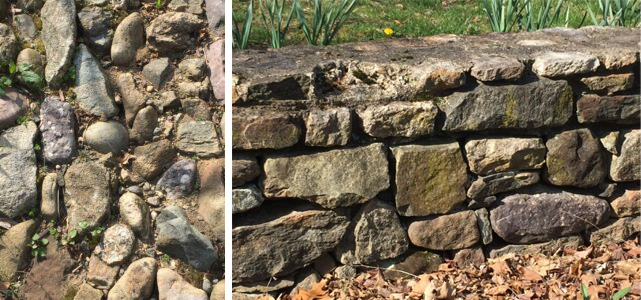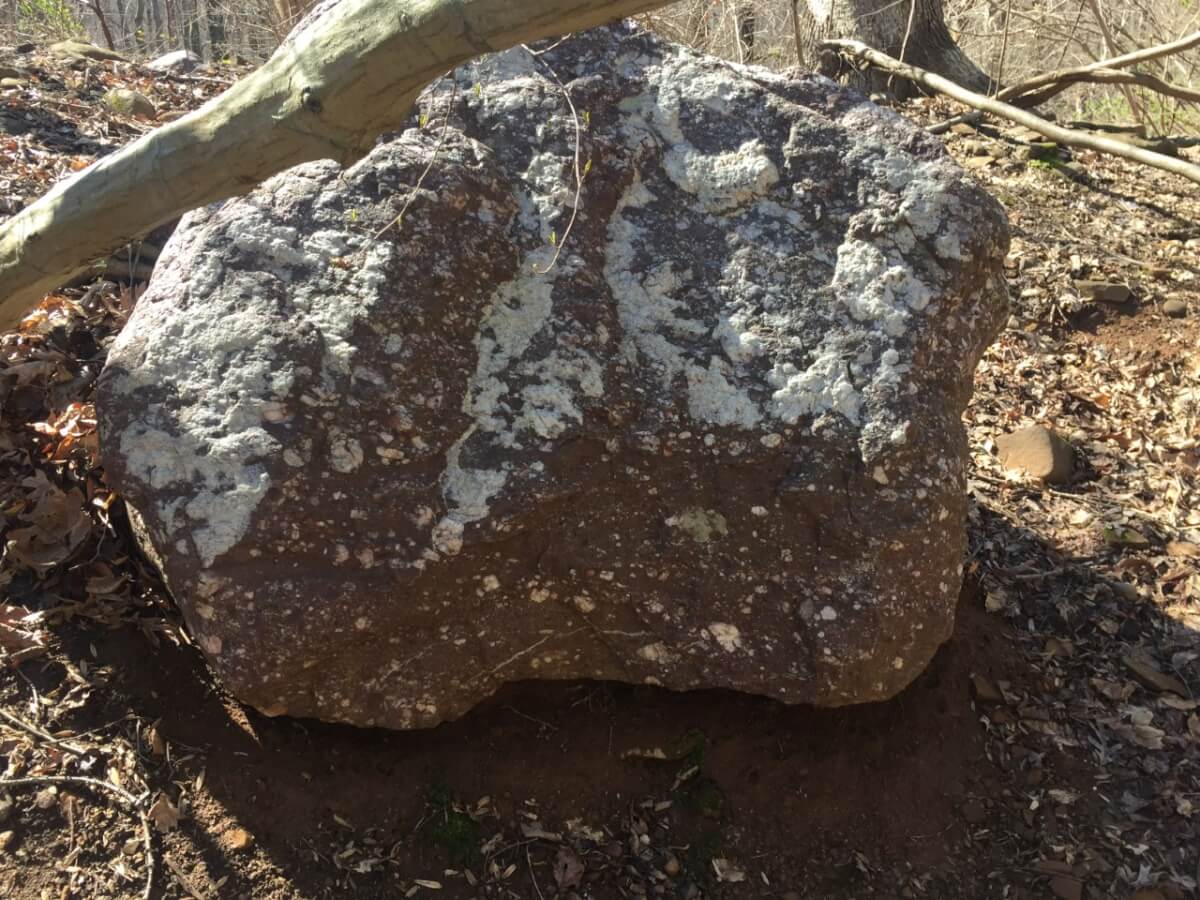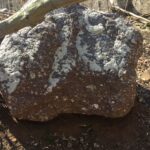We may walk past it, drive over it or walk on it and not even realize it is a clue to New Jersey’s past. What is it? A truly unique building material commonly known as puddingstone.
Puddingstone, also known as purple conglomerate, is found throughout Morris County, especially in Boonton and Mountain Lakes. It is believed it was named by English settlers who thought the stone resembled pudding with fruit.
Large examples can be found on nature hikes and was often used in building foundations, chimneys, walls and paths.
It is no surprise that puddingstone can be found steps from MHHM. It was used as the main building material in a nearby house on Macculloch Avenue, a garden path, and a stonewall.
Can you pick out the puddingstone in the garden path and stone wall?

Why does puddingstone look the way it does? It is a sedimentary rock which means it has gone through a process of compression. The white pebbles are quartz which are embedded in purple-stained sand and sediment. The purple stain is caused by iron that New Jersey is so well known for.
Mount Hope iron mine is the oldest iron mine in the nation and was just one of hundreds of mines in northern New Jersey which led the nation in iron ore production until the early 1900s. If you look around the world, you can find puddingstone in Hertfordshire, England and even in Massachusetts, but nothing beats the look of New Jersey puddingstone.
Resources:
- Want to know more about sedimentary rocks? Visit Oregon State University’s website for more information.

Topic: Celebrating Architecture
Age / Level: Elementary, Middle


